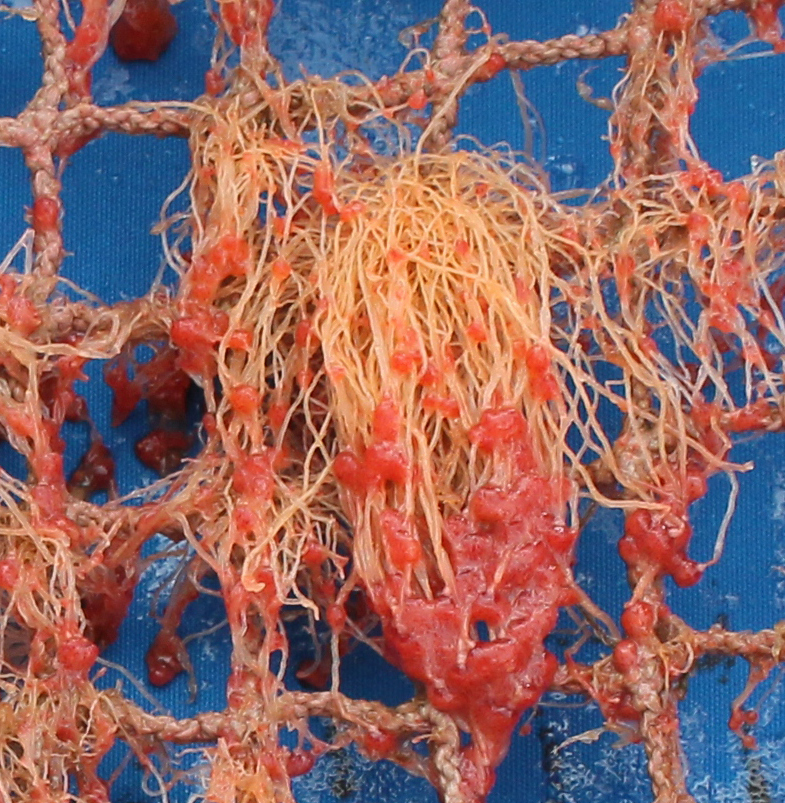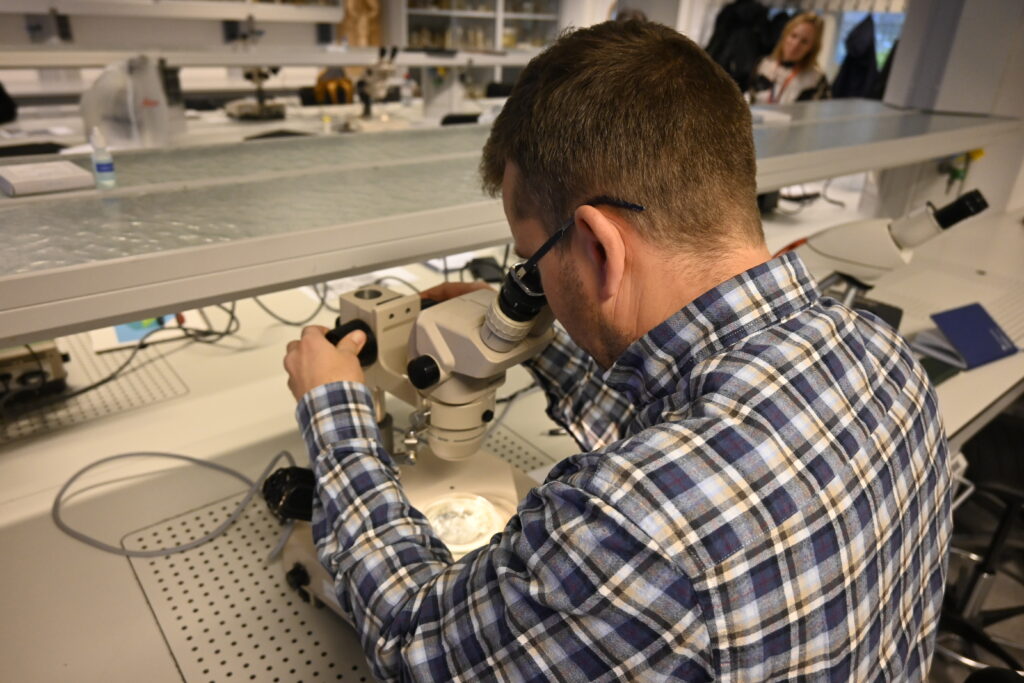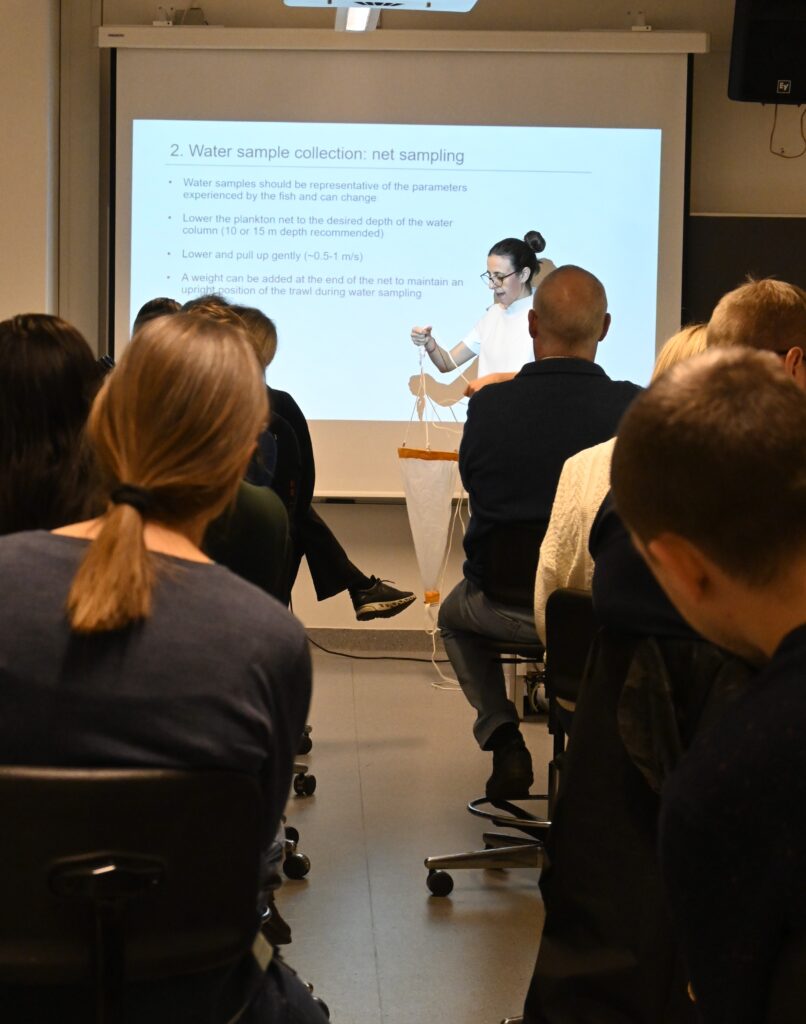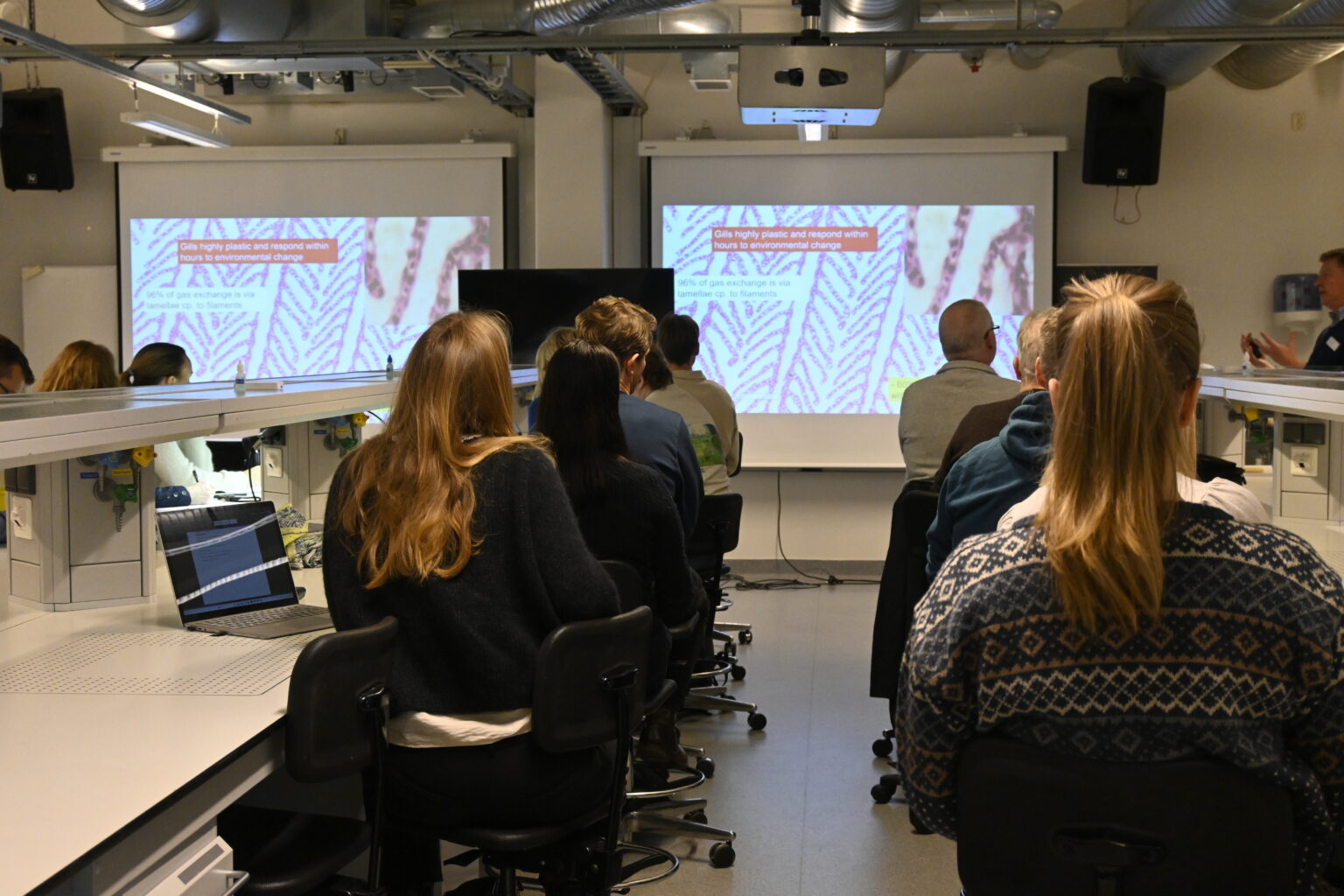In early November, we organized a comprehensive workshop and a research and development meeting on gill health in collaboration with PatoGen. Instructors Dr. Hamish Rodger and Dr. Ana Herrero from PatoGen shared their expertise with participants from various seafood companies.
Significant effort to monitor
Gill health is undeniably a major concern for fish farmers, and significant efforts is made to monitor it at various locations, both by the facility and fish health personnel.
Despite this, issues with gill health seem to be increasing in scope and pose a substantial welfare problem for the fish. This, in turn, presents challenges in daily operations, and the participants were eager to learn more from the instructors on factors influencing their fish’s breathing organ.
Cleaning can have a negative impact

During the workshop, they explored how planktonic organisms such as algae and jellyfish can affect gill health. Among others, Nina Blöcher, Senior Researcher at SINTEF, explained the possible impact of net cleaning.
– The main risk associated with net cleaning is the release of cleaning waste into the water, she says.
It can lead to a release of material that can contain harmful organisms which the fish then are exposed to. Among the common organisms growing on nets are hydroids, relatives of jellyfish.
Even though they look like plants, they are living organisms, and not exactly harmless.
– Like jellyfish, they have stinging cells that can harm the gills and the skin of the fish. In addition, the hydroids’ sting delivers venom that likely causes additional damage.
She explains that when net cleaning is carried out as often as every 5 days in some regions, fish exposed to hydroids may be unable to heal the injuries before being exposed again, resulting in accumulation of injuries.
– There is also a suspicion that injuries from stinging cells could serve as entry ports for secondary infections from pathogens that are present in the water.

Cleaning spreads “dirty” diseases
Blöcher also draws attention to the net cleaning’s role in disease transmission.
– The net cleaning could also play a role in disease transmission, as biofouling organisms growing on the net have shown to harbour pathogens, for instance Neoparamoeba perurans, the causative agent for amoebic gill disease. Exposure to the cleaning waste thus carries the risk of exposing fish to pathogens.
While cleaning has some negative consequences, as Blöcher points to, we all know that not doing it is not the way to go, either. Living in a dusty house isn’t the best option, so what should we do?
Blöcher explains that regarding net cleaning and novel technologies entering the marked, knowledge on their potential impact versus benefits for gill health is important, so that customers can make an educated choice of equipment after weighing costs and benefits for their specific location.
– Based on current knowledge, prevention of cleaning waste release should be a promising step forward, for example through collection or through grooming (24-hr cleaning), but field data is needed to verify the positive effect on gill health.

Going forward to improve gill health
The two-day workshop on gill health emphasised the collaborative effort needed to focus more on gill health. Blöcher highlights the importance of gaining more knowledge about causes as an important step to take.
– We really need to get better at identifying and differentiating between multiple underlying causes for gill problems so that mitigation measures can be established. We are likely underestimating some factors, such as cnidarian zooplankton e.g., small jellyfish, as there is a lack of monitoring for these. Here, diagnostic tools that allow cheaper and faster assessment of water samples, of gills and so on, maybe even by untrained personnel, would be really helpful.
Other participants at the workshop also shared their thoughts on the way forward. Gordon Ritchie from Mowi stressed the need for a more systematic approach to research on gill health.

– We need a short-term plan and a longer-term plan. We can’t do everything, so we need a research plan because there are so many gaps. We need to think about what will give the biggest benefit short term, medium term, and long term.
Tom Erik Hoemsnes from Åkerblå emphasised the need for more knowledge.
– It’s a complex issue and we need more knowledge in the field. Additionally, there is a need for increased focus and systematic monitoring of algae and jellyfish. Can collaboration across fish farmers be achieved so that the risk of algae in an area can be quickly identified, and appropriate measures taken?
Working together to find more answers
The complexities surrounding gill health issues and diseases are unmistakable. To truly address the issue, a joint effort is required – more knowledge, collaboration, and a collective strategy, may be the answer.
The R&D meeting about gill health is funded by Vestland Fylkeskommune.
